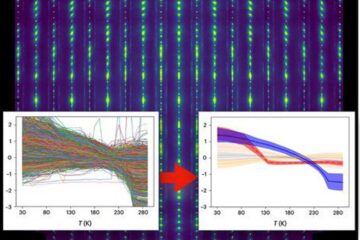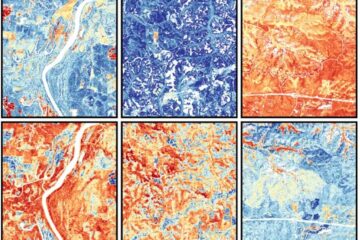The solution to a 7-decade mystery is crystal-clear to FSU chemist

Naresh S. Dalal, the Dirac Professor of Chemistry and Biochemistry at FSU, recently collaborated with three colleagues, Jorge Lasave, Sergio Koval and Ricardo Migoni, all of the Universidad Nacional de Rosario in Argentina, to determine why a certain type of crystal known as ammonium dihydrogen phosphate, or ADP, behaves the way it does.
“ADP was discovered in 1938,” Dalal said. “It was observed to have some unusual electrical properties that weren’t fully understood — and for nearly 70 years, scientists have been perplexed by these properties. Using the supercomputer at SCRI (FSU’s Supercomputer Computations Research Institute), we were able to perform in-depth computational analyses that explained for the very first time what causes ADP to have these unusual properties.”
ADP, like many crystals, exhibits an electrical phenomenon known as ferroelectricity. Ferroelectric materials are analogous to magnets in that they maintain a positively charged and a negatively charged pole below a certain temperature that is characteristic for each compound.
“Ferroelectric materials can stay in a given state of charge for a long time — they retain their charge after the external electrical source is removed,” Dalal said. “This has made ADP and other materials like it very useful for storing and transmitting data.
ADP is commonly used in computer memory devices, fiber optic technology, lasers and other electro-optic applications.”
What researchers found perplexing about ADP was that it often displays a very different electrical phase — one known as antiferroelectricity.
“With antiferroelectricity, one layer of molecules in a crystal has a plus and a minus pole, but in the next layer, the charges are reversed,” Dalal said. “You see this reversal of charges, layer by layer, throughout the crystal.”
Using the supercomputer at SCRI enabled Dalal and his colleagues to perform numerous highly complex calculations that couldn’t be duplicated in a laboratory environment. For example, they were able to theoretically alter the angles of ADP’s ammonium ions and then measure the effects on the crystal’s electrical charge. That approach ultimately led to their solution to the seven-decade mystery.
“We found that the position of the ammonium ions in the compound, as well as the presence of stresses or defects in the crystal, determine whether it behaves in a ferroelectric or antiferroelectric manner,” Dalal said.
The team’s research is important for two main reasons, Dalal said: “First, this allows us to further understand how to design new materials with both ferroelectric and antiferroelectric properties. Doing so could open new doors for computer memory technology — and possibly play a role in the development of quantum computers.
“Second, our research opens up new ways of testing materials,” Dalal said. “Using supercomputers, we can quickly perform tests to see how materials would react under a variety of conditions. Many such tests can’t even be performed in the lab.”
Media Contact
More Information:
http://www.chem.fsu.eduAll latest news from the category: Life Sciences and Chemistry
Articles and reports from the Life Sciences and chemistry area deal with applied and basic research into modern biology, chemistry and human medicine.
Valuable information can be found on a range of life sciences fields including bacteriology, biochemistry, bionics, bioinformatics, biophysics, biotechnology, genetics, geobotany, human biology, marine biology, microbiology, molecular biology, cellular biology, zoology, bioinorganic chemistry, microchemistry and environmental chemistry.
Newest articles

Machine learning algorithm reveals long-theorized glass phase in crystal
Scientists have found evidence of an elusive, glassy phase of matter that emerges when a crystal’s perfect internal pattern is disrupted. X-ray technology and machine learning converge to shed light…

Mapping plant functional diversity from space
HKU ecologists revolutionize ecosystem monitoring with novel field-satellite integration. An international team of researchers, led by Professor Jin WU from the School of Biological Sciences at The University of Hong…

Inverters with constant full load capability
…enable an increase in the performance of electric drives. Overheating components significantly limit the performance of drivetrains in electric vehicles. Inverters in particular are subject to a high thermal load,…





















